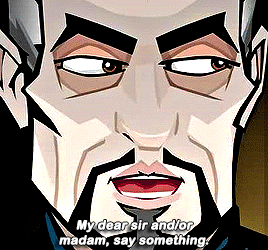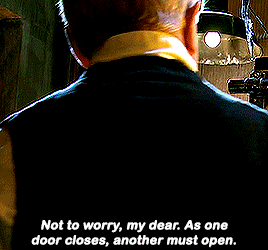#childrens classics
Explore tagged Tumblr posts
Text







Swiss Family Robinson, Illustrated
By Johann David Wyss
○
Dedication from 1892
#old books#swiss family robinson#book illustration#booksbooksbooks#booklr#bookblr#book community#dark academia#beautiful books#bookworm#readers#book pages#book lover#book life#book photo#dark acadamia aesthetic#childrens classics#classic books#book spines#book photography#book stuff#book nerd#book blog#bookseller#book selling
76 notes
·
View notes
Text
"I am only conscious of one hope, citoyen." "And that is?" "That Satan, your master, will have need of you elsewhere before the sun rises today." "You flatter me, citoyenne."
Emmuska Orczy, The Scarlet Pimpernel
#emmuska orczy#the scarlet pimpernel#Marguerite St. Just#Chauvelin#french revolution#reign of terror#childrens classics#childrens books#book quotes#bookish quotes#book quotations#page 126
10 notes
·
View notes
Text

I love this cover.
#booklr#books#bookblr#fiction#book#treasure island#robert louis stevenson#classics#childrens books#childrens classics
25 notes
·
View notes
Text

“If you look the right way, you can see that the whole world is a garden," Frances Hodgson Burnett, The Secret Garden
Available as a sticker, t-shirt, poster, notebook and more!
Shop here!
#quote#quotes#classic quotes#childrens classics#the secret garden#frances hodgson burnett#literature#literary quotes#design#classics#classic literature#classic lit quotes#lit quote#lit quotes#literature and quotes#redbubble#redbubble shop#redbubble artist
5 notes
·
View notes
Text
God, the character of Lowly Worm really takes me back.

15K notes
·
View notes
Text

Beautiful Hardcover Edition in Excellent condition
0 notes
Text
Child's Sock from Egypt, c.250-350 CE: this colorful sock is nearly 1,700 years old

This sock was discovered during excavations in the ancient city of Oxyrhynchus. It was likely created for a child during the late Roman period, c.250-350 CE.
Similar-looking socks from late antiquity and the early Byzantine period have also been found at several other sites throughout Egypt; these socks often have colorful, striped patterns with divided toes, and they were crafted out of wool using a technique known as nålbinding.

Above: a similar child's sock from Antinoöpolis, c.250-350 CE
The sock depicted above was created during the same period, and it was found in a midden heap (an ancient rubbish pit) in the city of Antinoöpolis. A multispectral imaging analysis of this sock yielded some interesting results back in 2018, as this article explains:
... analysis revealed that the sock contained seven hues of wool yarn woven together in a meticulous, stripy pattern. Just three natural, plant-based dyes—madder roots for red, woad leaves for blue and weld flowers for yellow—were used to create the different color combinations featured on the sock, according to Joanne Dyer, lead author of the study.
In the paper, she and her co-authors explain that the imaging technique also revealed how the colors were mixed to create hues of green, purple and orange: In some cases, fibers of different colors were spun together; in others, individual yarns went through multiple dye baths.
Such intricacy is pretty impressive, considering that the ancient sock is both “tiny” and “fragile."
Given its size and orientation, the researchers believe it may have been worn on a child’s left foot.

Above: another child's sock from Al Fayyum, c.300-500 CE
The ancient Egyptians employed a single-needle looping technique, often referred to as nålbindning, to create their socks. Notably, the approach could be used to separate the big toe and four other toes in the sock—which just may have given life to the ever-controversial socks-and-sandals trend.
Sources & More Info:
Manchester Museum: Child's Sock from Oxyrhynchus
British Museum: Sock from Antinoupolis
Royal Ontario Museum: Sock from Al Fayyum
Smithsonian Magazine: 1,700-Year-Old Sock Spins Yarn About Ancient Egyptian Fashion
The Guardian: Imaging Tool Unravels Secrets of Child's Sock from Ancient Egypt
PLOS ONE Journal: A Multispectral Imaging Approach Integrated into the Study of Late Antique Textiles from Egypt
National Museums Scotland: The Lost Sock
#archaeology#artifact#history#anthropology#child's sock#ancient textiles#ancient egypt#roman egypt#fabric arts#knitting#fashion#naalebinding#art#classical antiquity#children in archaeology#natural dyes#wool#yarn#ancient clothing#children#roman#sewing#egyptology#cute little stripy socks
2K notes
·
View notes
Text
The Secret Garden 🌹

Mary finds the door to the secret garden with the help of the little robin!
Based on the book by Frances Hodgson Burnett
#the secret garden#secret garden#frances hodgson burnett#childrens illustrator#childrens book illustration#childrens literature#classic books#childrens books#whimsical illustration#whimsical#whimsical art#vintage aesthetic#vintage art#illustration#character illustration#childrens illustration#mary lennox#european robin#book illustrations
3K notes
·
View notes
Text

The Children of Húrin, J.R.R. Tolkien
847 notes
·
View notes
Text

#wutang#wu tang clan#wu tang#wu tang forever#wu tang is for the children#bob ross#hiphop#rap#hip hop#classic#vintage#retro
1K notes
·
View notes
Photo





Patty McCormack & Nancy Kelly in The Bad Seed (1956)
#the bad seed#the bad seed 1956#patty mccormack#horror#horror movies#horroredit#1950s#filmedit#nancy kelly#film#gif#classic movies#creepy kids#evil children#mother's day#mother#mom#horrorgifs#classicfilmedit#classicfilmblr#classicfilmsource#fyeahmovies#dailyflicks#moviegifs#filmgifs#cinemapix#tvandfilm#filmtvdaily#usersource#rhoda penmark
841 notes
·
View notes
Text

#Alia was really there in utero asking for a play by play while stirring shit#This fiendish fetus was really going mom create problems#Classic lil sister behaviour#I just loved the convoys between Jessica and alia#Though I missed how freaked out Jessica is by alia#bene gesserit#dune#dune 2021#paul atreides#dune memes#frank herbert#dune messiah#children of dune#chapterhouse: dune#duncan idaho#god emperor of dune#Dune 2024#alia atreides#lady jessica atreides#Lady jessica#Arrakis#dune part two#dune part ii#dune part 2#anya taylor joy#rebecca ferguson#timothee chamalet#austin butler
1K notes
·
View notes
Text
"It does seem simple, doesn't it?" she said, with a final bitter attempt at flippancy. "When you want to kill a chicken... you take hold of it... then you wring its neck. ... It's only the chicken who does not find it quite so simple. Now you hold a knife at my throat, and a hostage for my obedience. ... You find it simple. ... I don't."
Emmuska Orczy, The Scarlet Pimpernel
#emmuska orczy#the scarlet pimpernel#Lady Blakeney#Marguerite St. Just#Chauvelin#reign of terror#the french revolution#childrens classics#childrens books#bookish quotes#book quotations#classic lit#page 90
2 notes
·
View notes
Text

#oh to read these books for the first time again#little women#louisa may alcott#anne of green gables#l.m. montgomery#children's books#classic literature#books#booklr#reading#bookish#bibliophile#library#libraries#tflo#aogg#librarians
465 notes
·
View notes
Text








THREE YEARS OF THEMASTERGIFS (November 5, 2020)
Dearest, I've been thinking. We need your TARDIS. We can't go up, but we can go down.
#dwedit#doctor who#parallels#multi#classic who#the time monster#time flight#the curse of fatal death#scream of the shalka#utopia#the doctor falls#the magician's apprentice#the timeless children#delgado!master#ainley!master#pryce!master#shalka!master#jacobi!master#simm!master#gomez!master#dhawan!master#ours#by lanie
2K notes
·
View notes
Text


The Battle of the Frogs and Mice, from Up One Pair of Stairs of My Bookhouse by Willy Pogany (1920)
#willy pogany#art#illustration#golden age of illustration#1920s#1920s art#vintage art#vintage illustration#vintage#hungarian art#hungarian artist#books#book illustration#childrens books#fairy tale#fairy tales#fairytale art#mice#war#classic art
3K notes
·
View notes